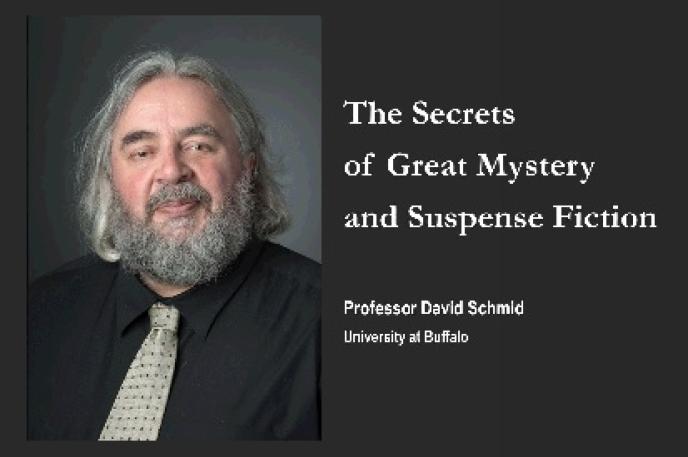
Video series teaches about Sherlock Holmes among detectives and mystery fiction
June 12, 2019
Would you ever consider treating your appreciation of reading mystery books like a college course? You may be exposed to a wide-range of historical and modern mysteries in “The Secrets of Great Mystery and Suspense Fiction” video series available on Kanopy. Kanopy is a video streaming service, offering more than 30,000 independent and documentary films. “The Great Courses” series is included with a cardholder’s access to the service. The series contains 36 college-level lectures in digital formats and this course about crime fiction.
Hosted by David Schmid, an associate professor of English at the University of Buffalo, the lectures average 31 minutes each. Well-versed on the subjects, Schmid has written and edited several books and publications about crime and popular fiction.
During the first lecture, various genres of fiction are mentioned. Schmid identifies mystery fiction as the catch-all for all types whether "cozy," "hard-boiled," "historical" or others with, typically, a "whodunit" theme. Conversely, suspense fiction "arguably contains no mystery at all, because we know the identity of the criminal from the beginning of the story," Schmid said. In any regard, Schmid concludes that these books "have some element of mystery that's meant to challenge and to entertain us."
The course begins with an examination of the first actual mystery novels including a focus on the trendsetter Edgar Allan Poe with his 1841 story, The Murders in the Rue Morgue. From this publication came elements borrowed repeatedly for mystery books including an eccentric amateur detective, an admiring sidekick and crime in an urban setting. Schmid discusses other writers’ contributions in the first lecture titled "Mystery Fiction's Secret Formula," but focuses on Poe, Sir Arthur Conan Doyle and Agatha Christie. Those three authors, with their detectives, C. Auguste Dupin for Poe, Sherlock Holmes for Doyle and Hercule Poirot and Miss Marple for Christie, emphasized their use of intelligence and logic to overcome any difficult mystery.
The breadth of scope for the following individual episodes is impressive. There are exciting topic titles such as “The Criminal,” “The Sidekick,” “The Locked Room,” “The Dime Novel,” “The Femme Fatale” and 30 more. The familiar subjects of detectives, private eyes and women in crime are also presented. Additionally, Schmid’s lectures stress the genre’s push to be innovative and remain popular. That results in crime fiction with different ethnic groups, the LGBT community and different settings around the world. The mystery reader is permitted, Schmid says, an armchair view of the world with a look at different societies through the issue of handling crime.
Also, the professor conducts his lectures from a set which could serve as the stage for a 1930s private-eye office--perhaps, the office for Dashiell Hammett’s Sam Spade? As Schmid talks and occasionally walks around the set, one may notice an old manual typewriter, trench coat resting on a coat rack near wooden Venetian blinds and a chestnut-wood colored set walls.
